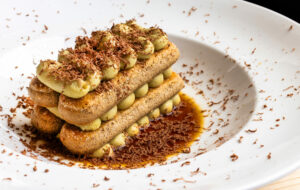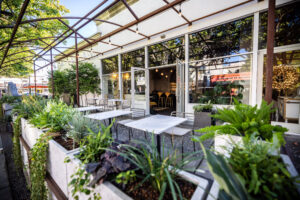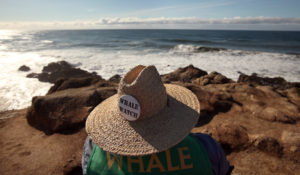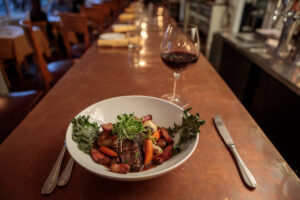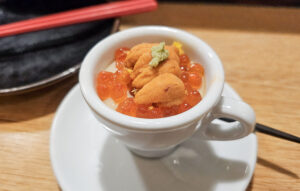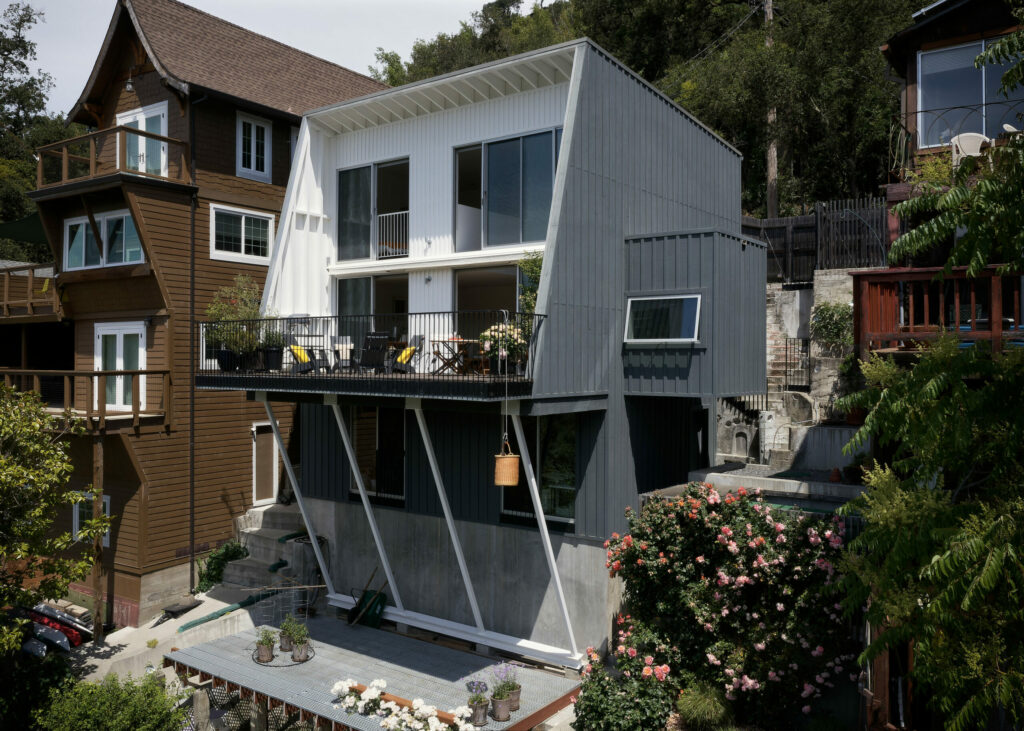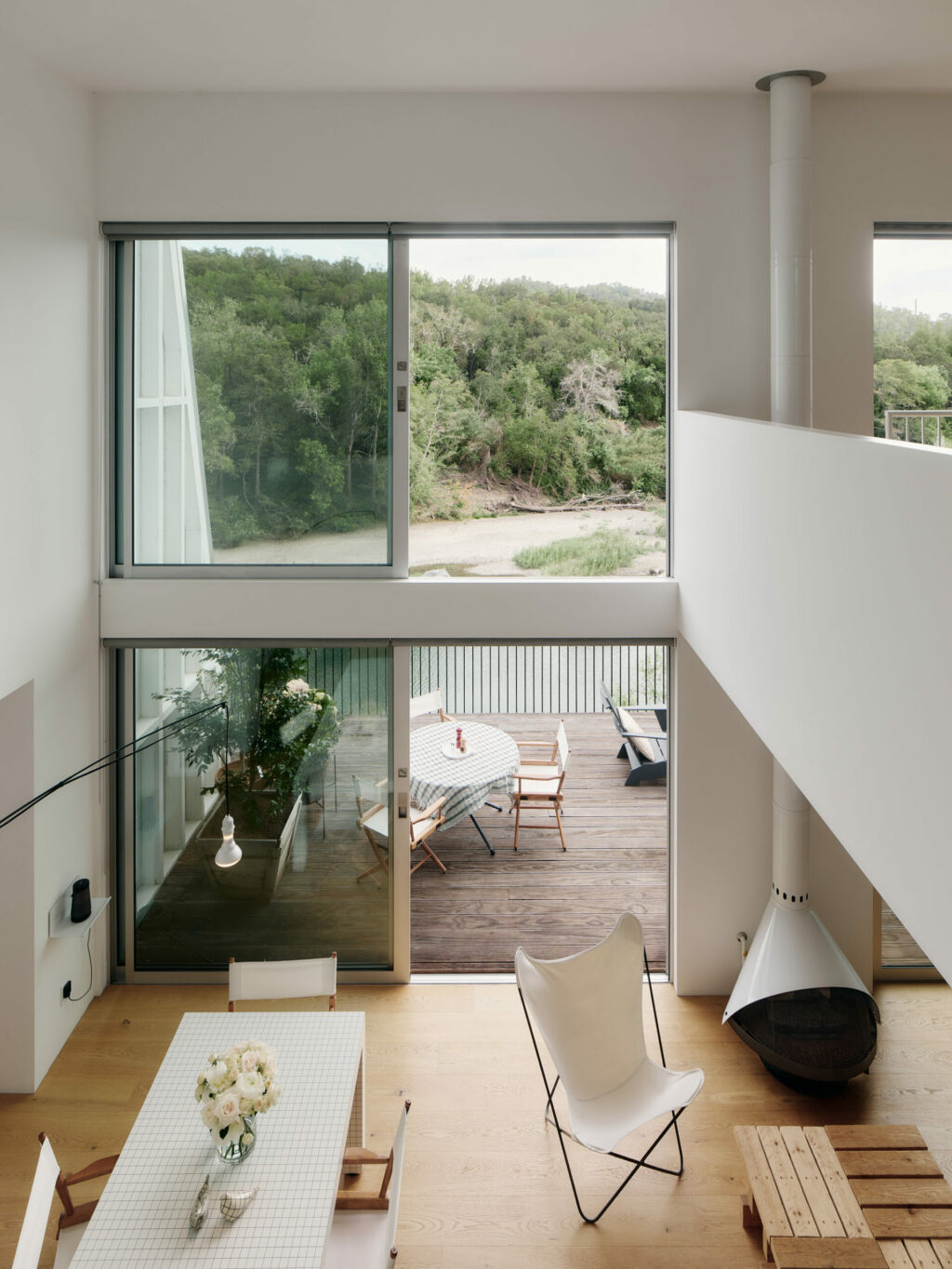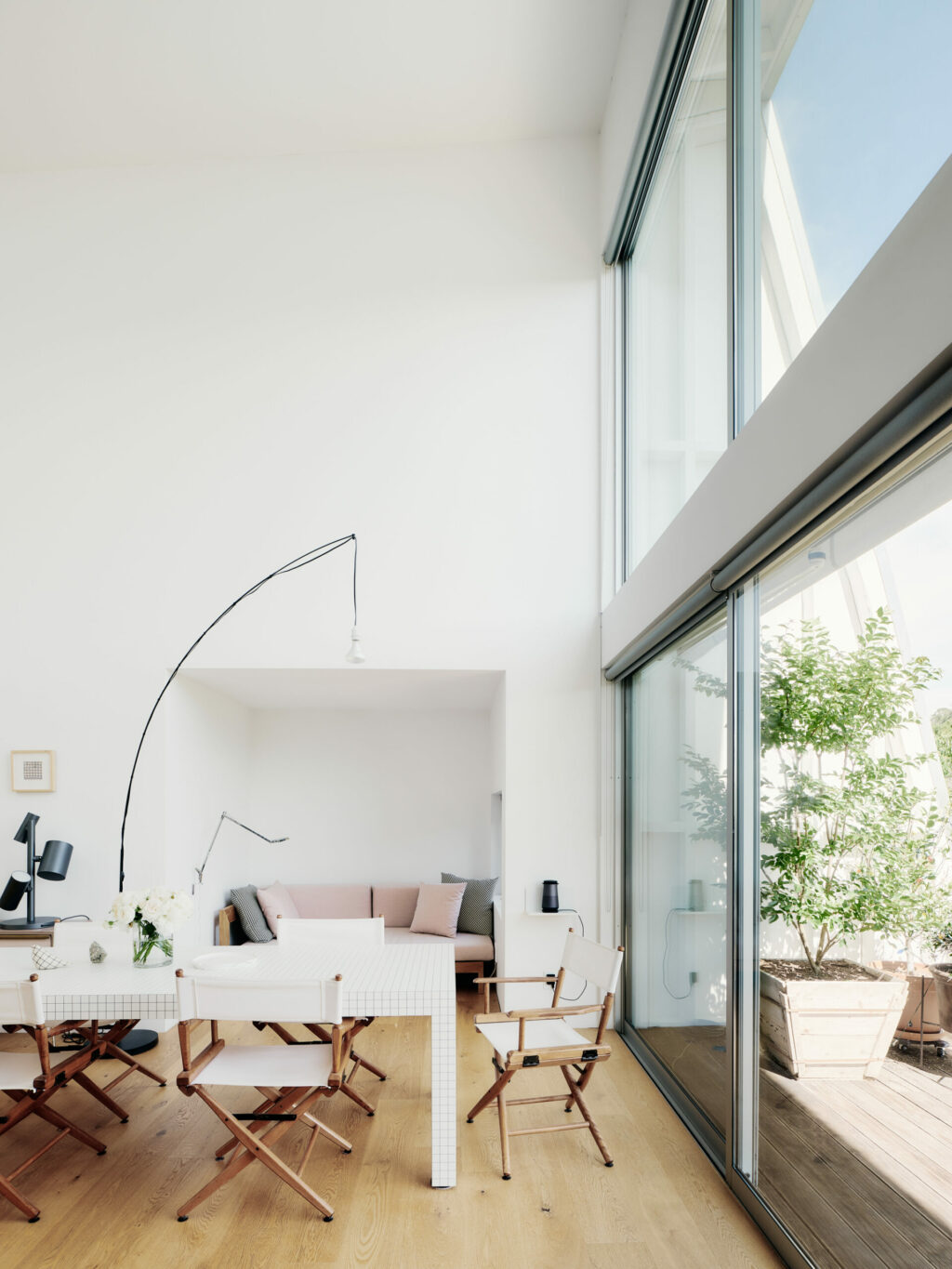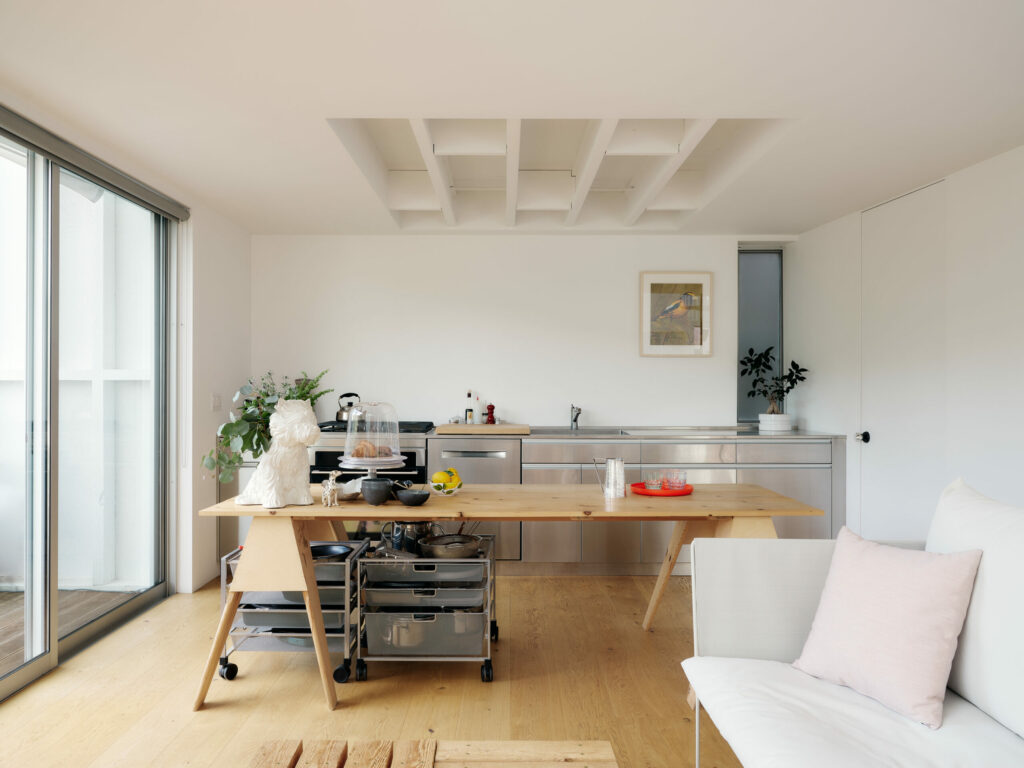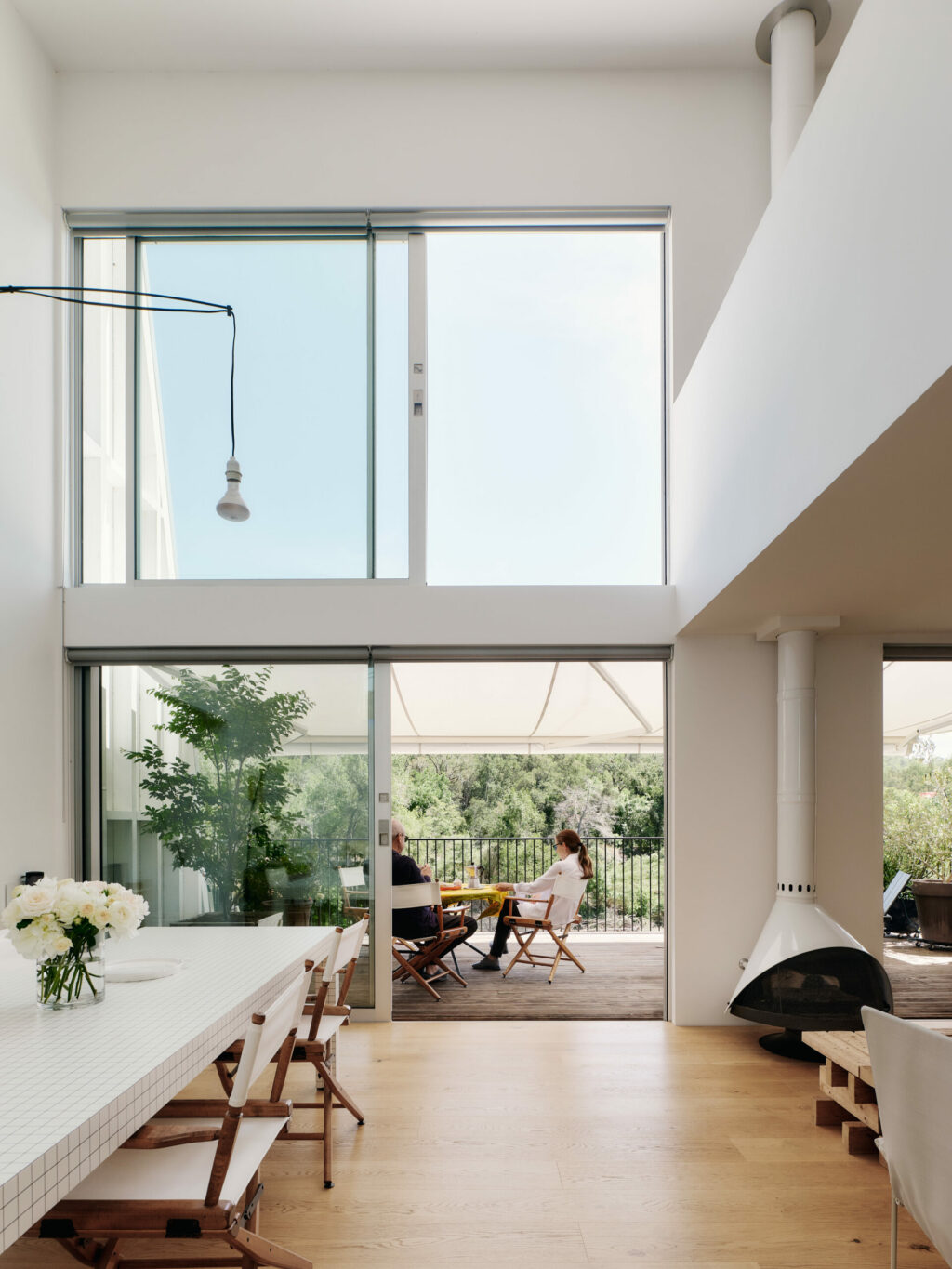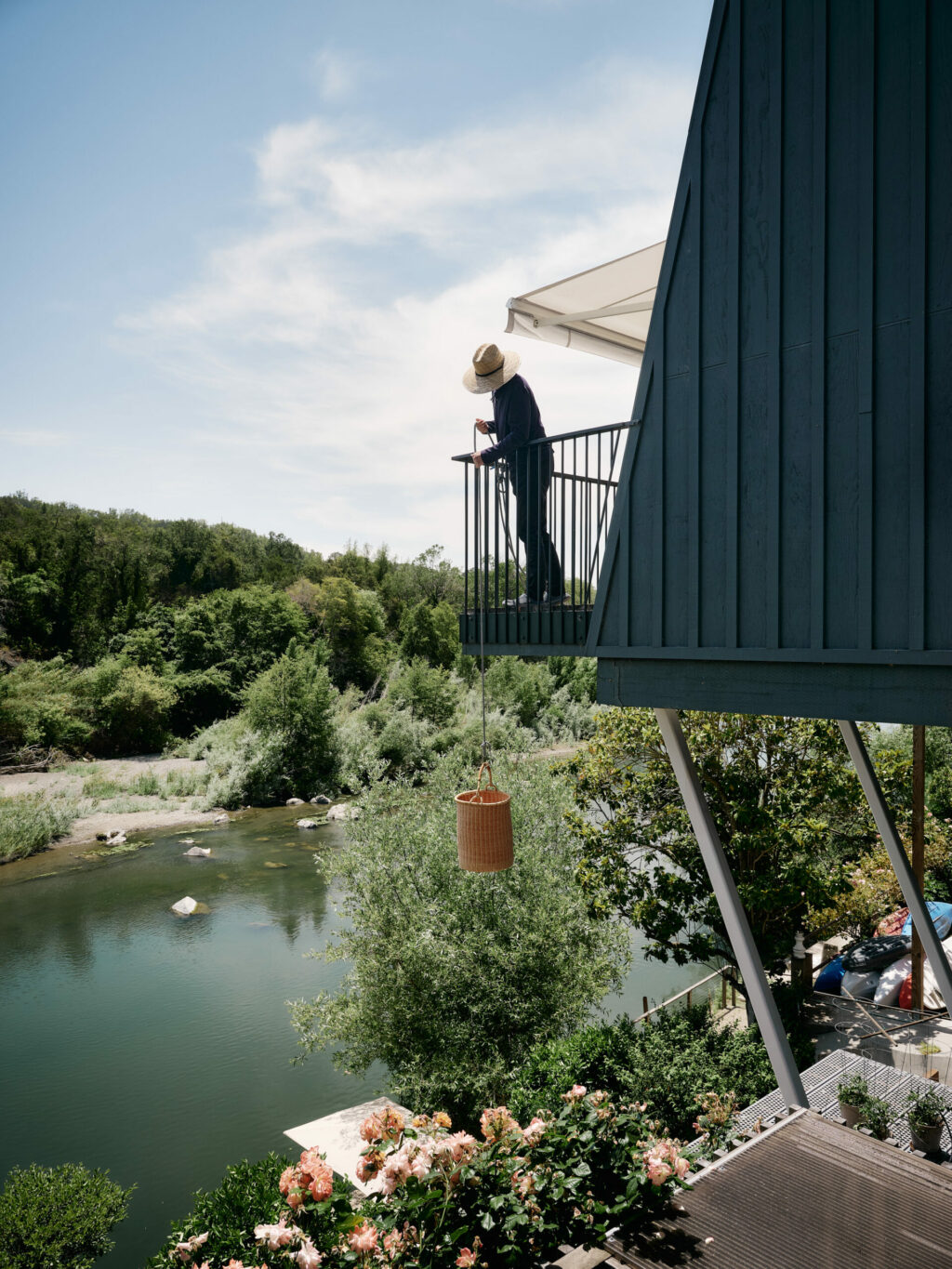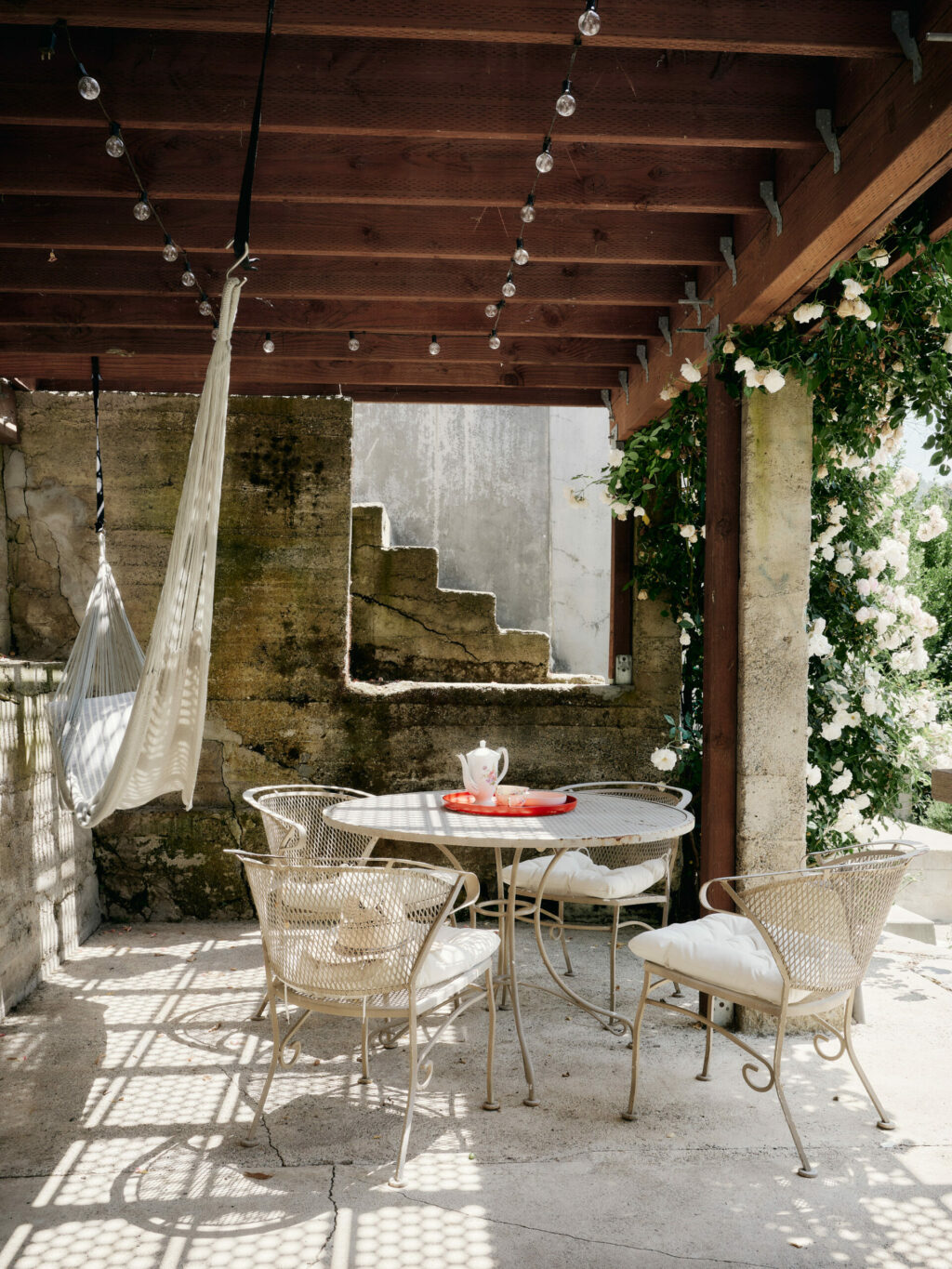House hunter Joanna Grawunder’s first impression of the property at the base of Healdsburg’s Fitch Mountain was horror and a hard no. As she and husband Mark Jensen were scouting out weekend home possibilities along the Russian River in 2012, she recoiled as they approached one listing.
“I was screaming at him. Don’t stop! Just go!” she recalls. But her husband who had a hunch there might be more than meets the eye, insisted they have a look.
“As soon as we walked in — and we made sure not to fall through the floor or step on a rat — we saw this. It was so amazing,” she says, looking out from her deck at a gobsmacking stretch of the river where the water at this time of year pools calmly against a palisade of trees in the early evening sun.
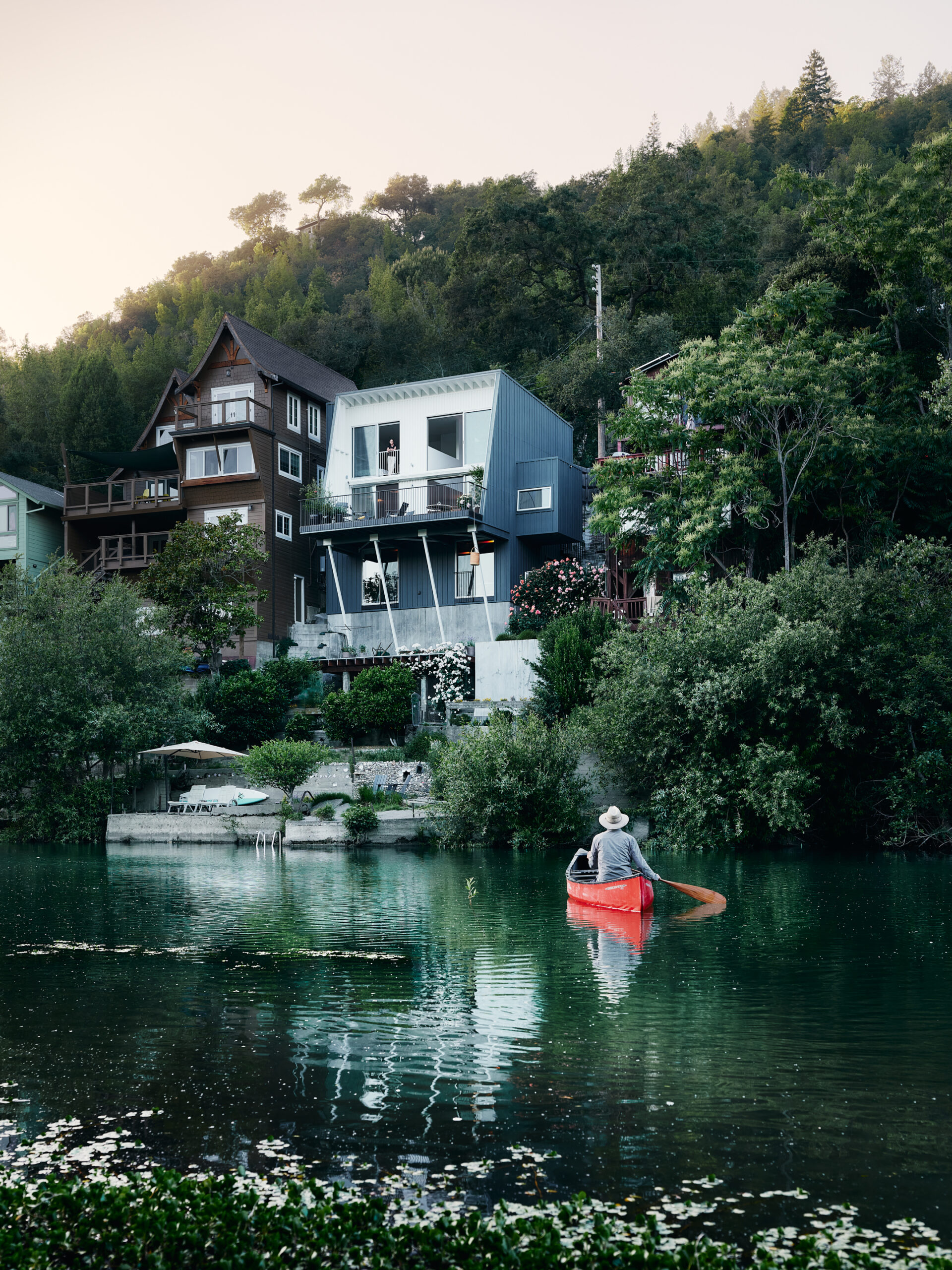
That view is what sold them on a ramshackle house with numerous funky additions, that had been abandoned for two years. Pretty much anything that could be wrong with it was, from septic problems to termites.
“Being two crazy architects, we thought, nice view, nice location. We can solve all these problems,” says Jensen. He was propelled by fond memories of spending hot summer days on the Russian River with his dad, who moved to Healdsburg in the 1970s and still lives on the other side of the mountain.
When the couple went to county offices to research the property, they discovered it had a long list of violations. “They told us 20 other people did the same thing we did,” Jensen says, “and just ran for the hills.”
But Jensen knew the location was a jewel. While they never would be allowed to build a new house so close to the river, they could create something new on the foundation and footprint of the old Depression-era summer cabin. It took two years getting permits and two more years to build before they were finally able to move in eight years ago.
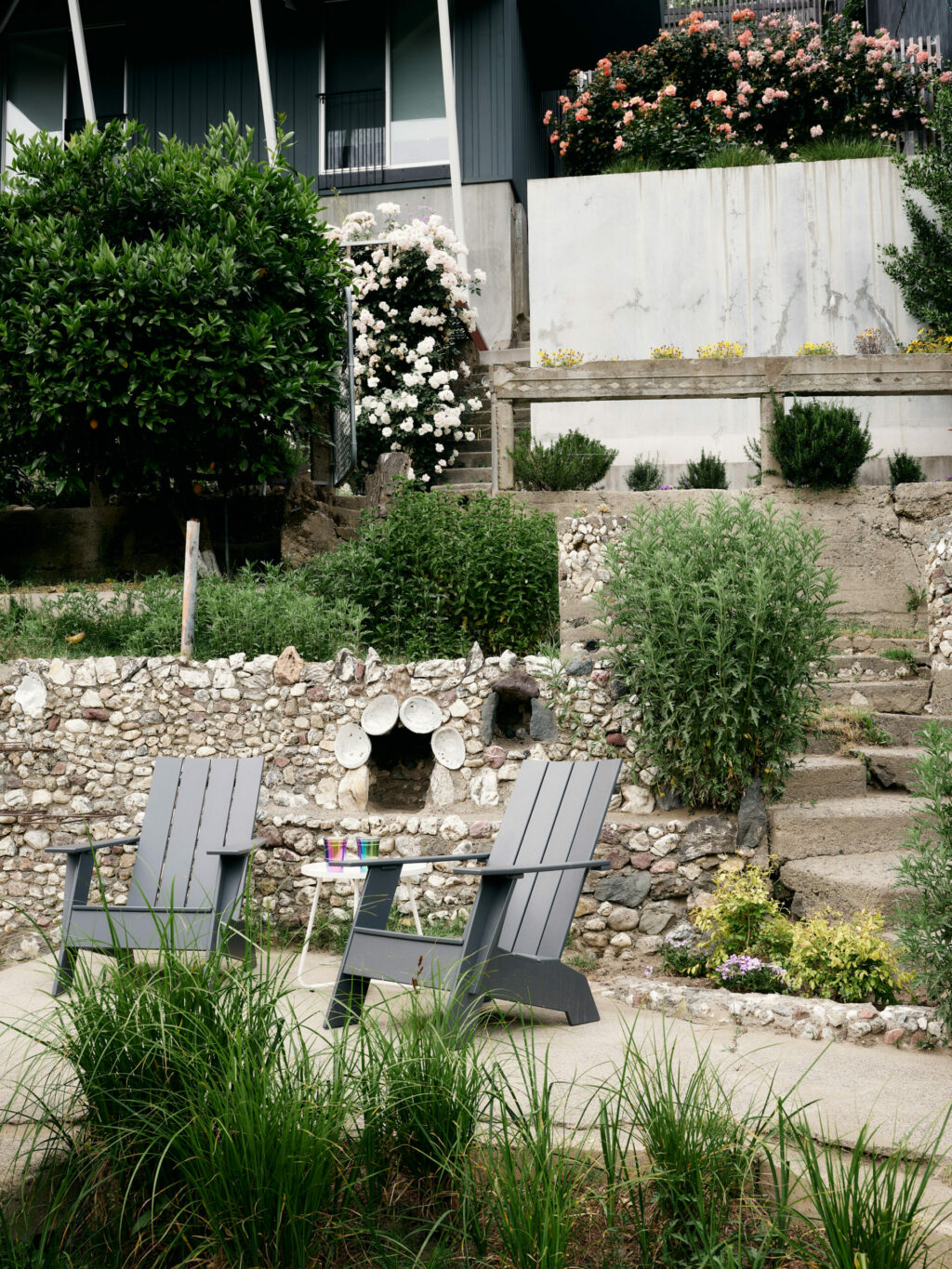
The effort and wait were worth it. The modest multilevel house made of simple board-and-batten siding and a concrete base evokes a farm building in the rural landscape and has proven remarkably comfortable despite — or perhaps because of — its simplicity. They love that it’s only a 2-mile walk to the Healdsburg Plaza and they’ve built up a solid network of friends, including one with a farm who frequently has amazing produce to share since they have little space to grow more than tomatoes, some espaliered apples, and some citrus trees.
“This was intended as our weekend getaway. But then, common story, Covid hit and we moved here full time and just got so enamored with the lifestyle we really didn’t ever want to leave,” says Jensen, who heads his own firm, Jensen Architects, in the city. “We still do have a small loft in San Francisco where I stay when I go in to work a couple of days a week, but the majority of the time we’re here.”
While little of the original structure remains, they were charmed by the steep, timeworn concrete steps leading down to the original dock. What they hadn’t noticed at first was the 20th-century Boho art embedded in the walls that terraced down to the river — decorative abalone shells, mirror and tile fragments, glass bottles, and small niches perfect for candles on a warm night.
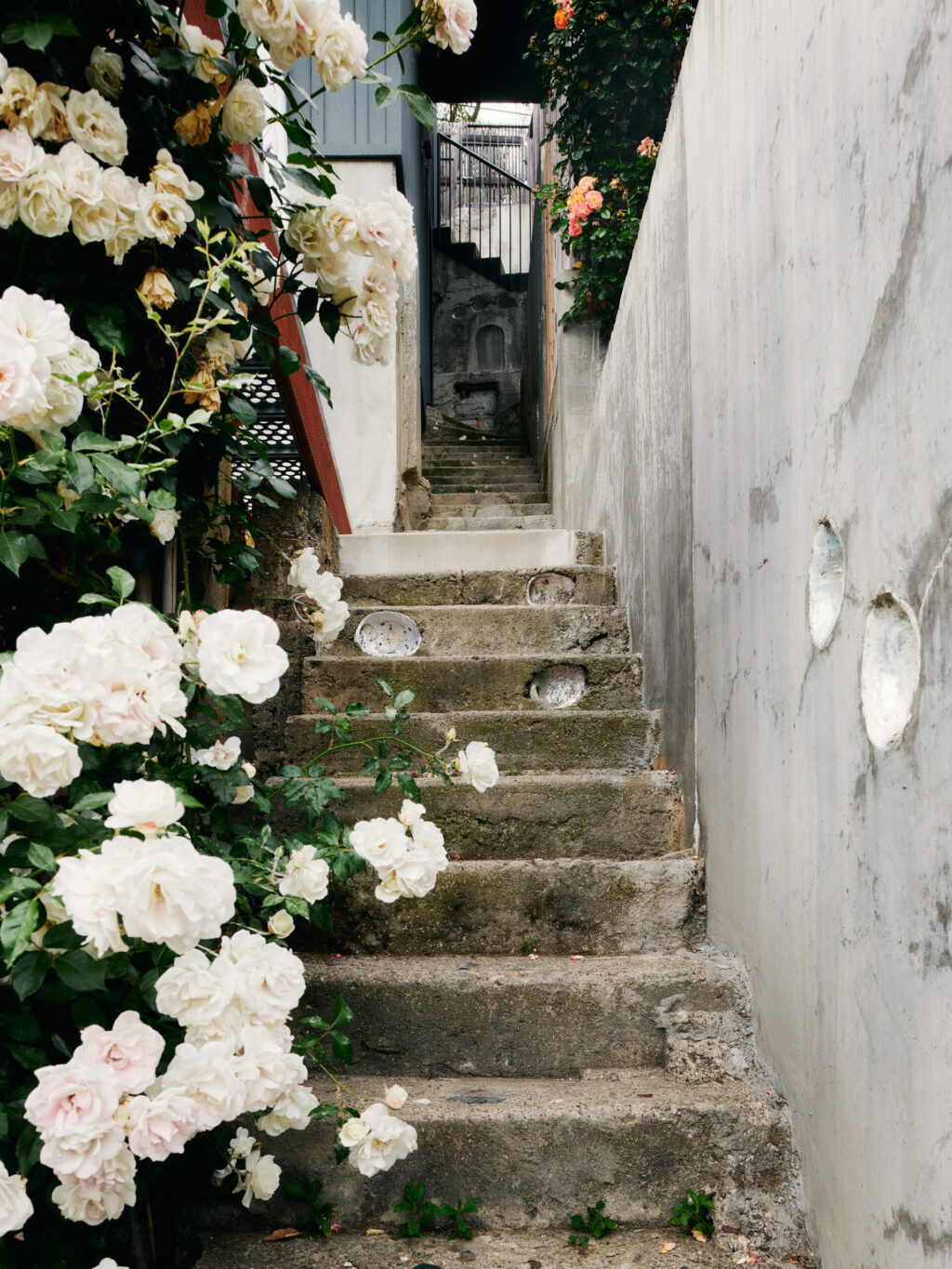
It was as thrilling as a major archaeological discovery when they unearthed it beneath a thick layer of sand.
“We didn’t even know we had those terraces,” Jensen says. “Once we started cleaning up, we always say it was like finding Pompeii.”
Digging sand and silt out of the terraces where they often hang out — closer to the river and the amusing parade of people in their floaties, inner tubes, kayaks, and canoes — has become an annual spring ritual. “We call it shovel camp. It’s fun,” Grawunder says.
The house is simple and open, with a winding staircase leading up to a bedroom loft where, in winter, the sunrise from a saddle in the hills is their alarm clock. Grawunder marvels at how, from this high perch, she can actually look down on great blue herons, bald eagles, and osprey patrolling the river.
Most of the casual furnishings are indoor-outdoor, so they can be moved outside for entertaining. Although the whole house is only 1,100 square feet, a wide deck with wing walls on either side and a retractable awning extends the living space in summer. The mini kitchen is confined to just one wall but sufficient for cooking, even for the frequent guests who, in summer, often arrive by kayak and canoe.
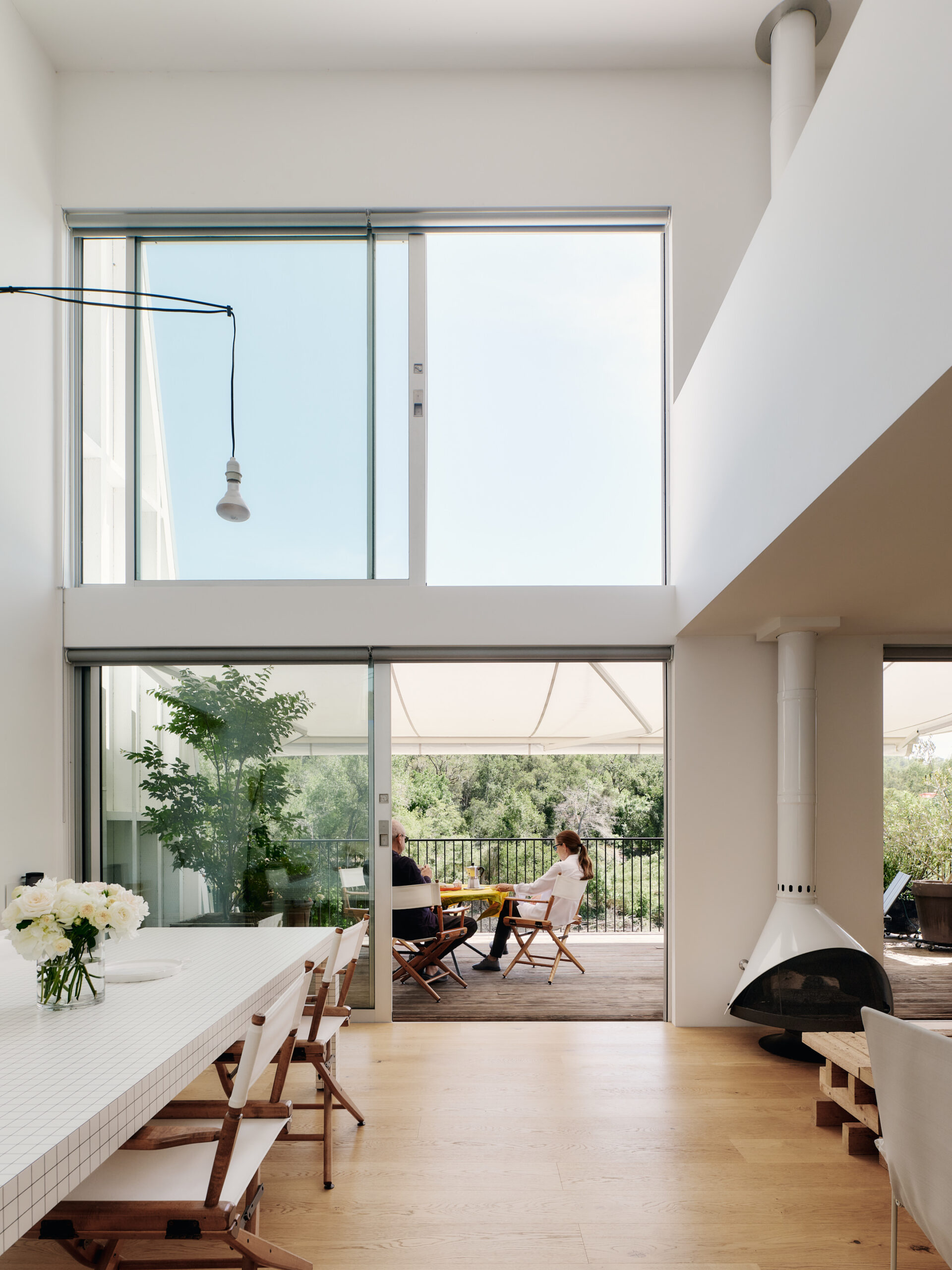
But there are a few Fabergé-quality Easter eggs embedded within the simple decor that speak to the couple’s deep appreciation for modern art and design. Their dining table, with a playful grid pattern, is a focal piece, created by Superstudio, a famed Italian design collective founded in the 1960s by Adolfo Natalini and Christiano Toraldo di Francia, under whom Grawunder once studied and worked.
She and Jensen met while studying abroad in Florence during their last year of architectural courses at Cal Poly San Luis Obispo. Grawunder stayed in Italy for many years — she still maintains a tiny apartment in Milan where she continues to work with galleries — and moved into artistic design, from limited edition furnishings to modern lighting and color installations. One of her pieces, a striking acrylic mirror light, looks like a window high on the white walls of the open concept living space.
The pair love observing all the seasons from their snug nest. In winter they can sit in an alcove cantilevered off the living room and watch the rushing water.
But summer is when the river slows and the living is easy. They frequently entertain, starting out at the dock with drinks and moving up to the covered deck for dinner.
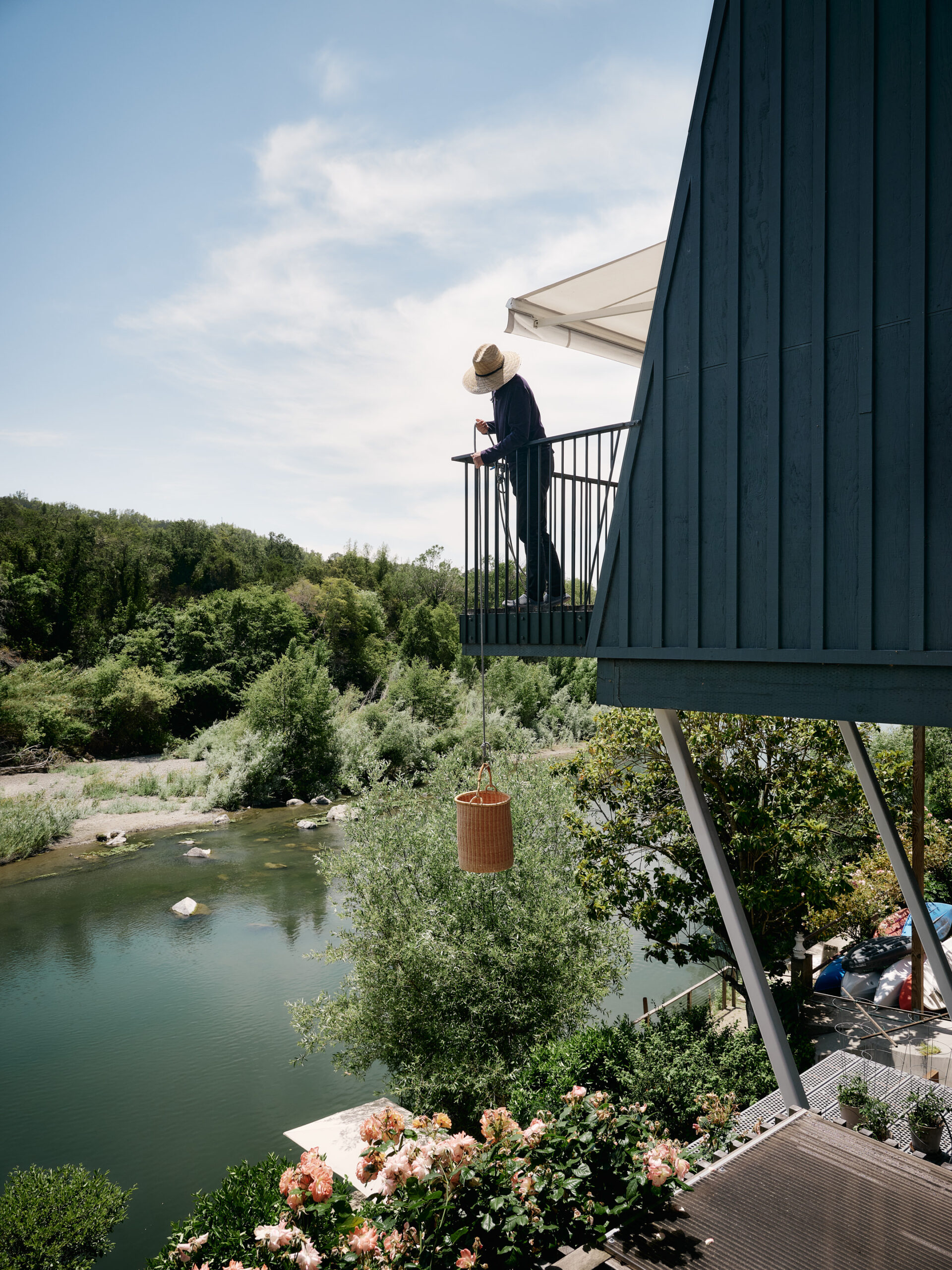
“But on warm evenings, I end up bringing the dinner down there,” Grawunder says. A rope with a basket dubbed the “Italian grandmother elevator” helps transport pasta and pizza to guests below. There is a casual camaraderie along the river, where the waterway is a country road linking neighbors.
“It’s not like it’s hot every night. But when it stays warm in the evening, it’s great to be down there,” Jensen says. “There are varying degrees of impromptu and planned interactions because sometimes people just paddle by and invite themselves to come ashore.” The pair are ready with free refreshments.
“We have this long paddle,” Grawunder adds with a chuckle. “Sometimes we hand out Negronis. They don’t even have to get out of the boat if they don’t want to.”
Do you — or someone you know — have a beautiful home with a story to tell? Whether it’s big or small, rural or suburban, Sonoma magazine wants to showcase what makes your slice of Sonoma County special. Email us at editors@sonomamag.com and share your story.


